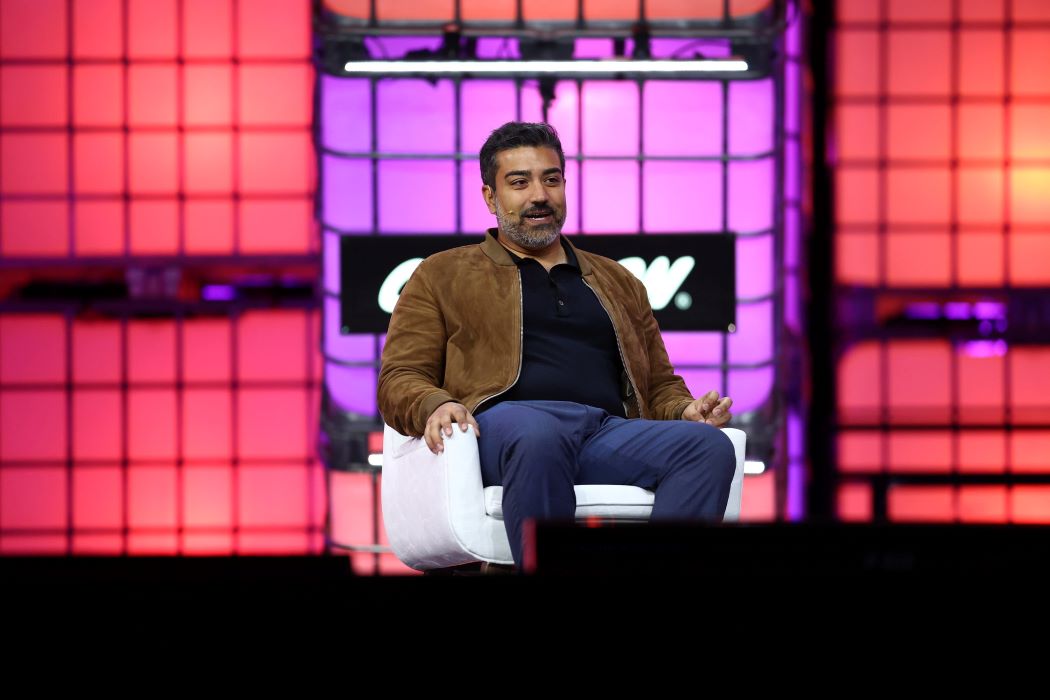
Director Lila Neugebauer on the Road to ‘Causeway’: Jennifer Lawrence, Flash Floods and No More Scott Rudin
“Permanence was a new reckoning,” says Lila Neugebauer of directing Apple’s soulful film Causeway. The 37-year-old director had made a name for herself in New York in the past decade for helming acclaimed off-Broadway plays like Annie Baker’s The Antipodes, Sarah DeLappe’s The Wolves and Tracy Letts’ Mary Page Marlowe before making her Broadway debut with a 2018 production of Kenneth Lonergan’s The Waverly Gallery — which earned a Tony nomination for best revival of a play and won stage and screen veteran Elaine May her only Tony, for best actress in a play.
Neugebauer was comfortable in that medium — she says that theater “is invested in its own fragility and ephemerality. It’s expiring in front of you in real time.” But Hollywood was already calling: In 2018, she directed an episode of the Duplass brothers’ Room 104 for HBO, and early in the run of The Waverly Gallery, one of the show’s producers, Scott Rudin, passed along a script he thought she would be interested in.
Related Stories
Originally titled Red, White and Blue, the first draft of Causeway, which Neugebauer describes as “beautiful, patient, careful,” was written by first-time screenwriter Elizabeth Sanders. Also joining early in the drama’s development were novelist Ottessa Moshfegh and her writing partner (and husband), Luke Goebel.
About six weeks later, Neugebauer says, Jennifer Lawrence’s name was mentioned as a potential collaborator, and the pair got together for dinner. “I thought that would be very good casting,” says Neugebauer, who adds that she and the actress formed a connection over the material. “Our rapport was instantaneous,” she says. “We were creatively aligned, aesthetically aligned. On an intuitive level, it felt like I could have a strong creative partnership with her, and she signed on that night.”
Lawrence wasn’t just boarding the project to play the lead role of Lynsey, a soldier who returns to her childhood home in New Orleans after suffering a brain injury while stationed in Afghanistan; the A-lister would also produce (along with Excellent Cadaver producing partner Justine Ciarrocchi). The drama also stars Brian Tyree Henry as James, a fellow New Orleans native with whom Lynsey strikes up a friendship. The two discover that they share a melancholic regret about their troubled families and past traumas.
“I’ve known Brian since I was 19,” says Neugebauer, having spent time with Henry when they were at Yale (Neugebauer as an undergraduate, Henry as an MFA candidate). She adds that many of the film’s supporting players — Linda Emond as Lynsey’s mother, Jayne Houdyshell as a compassionate caretaker who helps Lynsey recover after she’s discharged from the military hospital, and Stephen McKinley Henderson as a neurologist who pushes back on Lynsey’s stubborn drive to return to active service — are celebrated theater actors, which made the transition to the film medium feel a little more familiar.
“This may sound Pollyannaish, but what I enjoy about my job has to do with building a unique language with each collaborator,” says Neugebauer. “Whatever the rehearsal room or the set is, I’m genuinely interested in what’s going to unlock this particular person’s creativity, and what they need most to be supported to do it. I had a cultural shorthand with all of the supporting actors — literally every single one of whom I knew from the New York theater world, whether we’d done something together or I had just seen them in three or four plays. Having that shared reference point was helpful.”

Yet, working with a bona fide movie star in Oscar winner Lawrence wasn’t intimidating for the director. “Jen and I had been developing a shared language from the first dinner we had, the moment of blastoff,” says Neugebauer. “Creating a culture on set broadly, regardless of who was there that day, actually felt pretty organic.” She adds that working in a new visual medium didn’t require “radical acts of translation” — her process of connecting with each of her onscreen collaborators was similar to the work she does before a stage production: “To me, it feels like a more habituated project of finding the language for the person in that moment.”
That said, filming on location is much different from mounting a play in a New York theater. It’s extremely rare for inclement weather to impact a Broadway performance, for instance; a New Orleans summer is less predictable. “We had heat waves, flash floods,” recalls Neugebauer of the atmospheric complications she experienced in summer 2019, when the bulk of Causeway was filmed. “We added up the hours we held the production for lightning, and I think we lost days.” And that was all before things were shut down when Hurricane Barry hit the city.
With a quarter of the film left to shoot, Causeway was set to restart in March 2020 — and it was the day before her flight to the Big Easy that Neugebauer got the next batch of bad news: COVID-19’s arrival would postpone the production indefinitely.
It wasn’t until summer 2021 — two years after filming began — that Neugebauer reassembled her cast and crew to complete the movie. So much had changed over those two years; for one, Rudin was no longer producing, having stepped away from projects after his abusive behavior toward employees was revealed in a THR story. Also, Neugebauer had already begun cutting together an early edit of the film and ended up making tough choices about what to remove from the final version.
“We shot flashbacks, set in Afghanistan,” she explains. Those sequences were originally intercut with a scene in which Lynsey tells her doctor about the accident in which her vehicle drove over an explosive device, killing her companion and leaving her with her brain injury. “Our incredible production designer Jack Fisk had turned a landfill in New Orleans into an Army base,” says Neugebauer, who struggled with the decision to cut those sequences. “You hear a lot about killing your darlings, and then you need to live it.”
That creative choice, however, felt like the right way to maintain the film’s focus on Lynsey’s healing process in the present rather than dwelling on the past. “The focus of the movie is how to live with it, how to cope with it, how to live through it,” says the director. It’s a bold move, requiring, as Neugebauer puts it, “more patience from the viewer.” It’s also evident of Neugebauer’s role as a film director, who has more power over her audience than she would with a play — but who also risks a certain finality that she wouldn’t experience with a stage production.
“The engagement with this medium has deepened my appreciation for the ways in which [stage and screen] are radically different,” says Neugebauer. “Now living in both worlds has made me relish and treasure what each of them aspires to do.”
This story first appeared in the Nov. 16 issue of The Hollywood Reporter magazine. Click here to subscribe.










































![iFi's GO Bar Kensei Dongle DAC Supports K2HD Technology With Some Samurai Swagger [Updated] iFi's GO Bar Kensei Dongle DAC Supports K2HD Technology With Some Samurai Swagger [Updated]](https://i0.wp.com/cdn.ecoustics.com/db0/wblob/17BA35E873D594/33FF/45A11/QTXOLJR4xDKSNMMk2WlTgjaIlvSgcYpeU1xJzUwIoYs/ifi-go-bar-kensei.jpg?w=768&ssl=1)
































